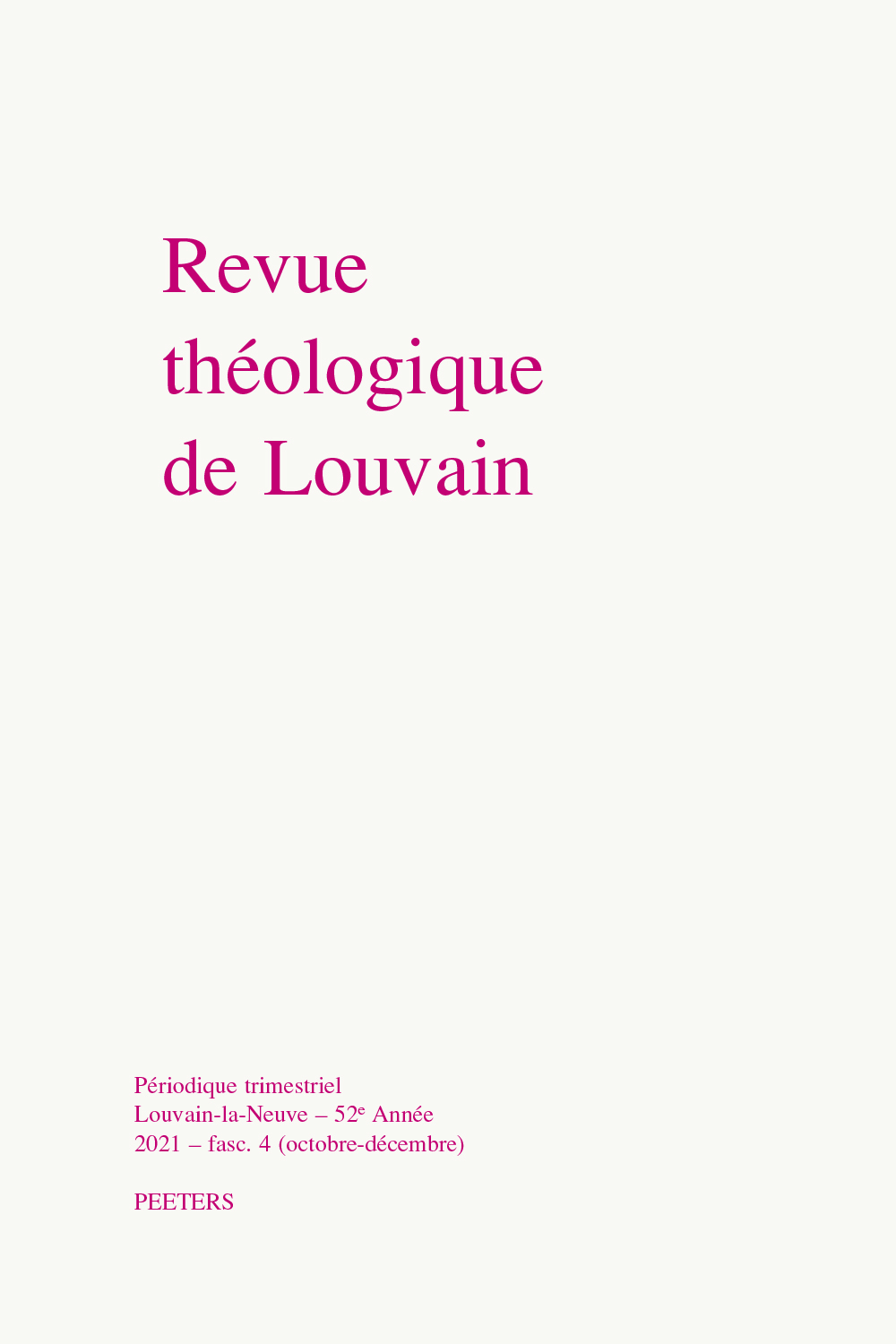 previous article in this issue previous article in this issue | next article in this issue  |

Preview first page |
Document Details : Title: La constitution Sacrosanctum Concilium et sa mise en oeuvre Author(s): DE CLERCK, Paul , HAQUIN, André Journal: Revue Théologique de Louvain Volume: 44 Issue: 2 Date: 2013 Pages: 171-196 DOI: 10.2143/RTL.44.2.2981471 Abstract : Cet article à deux voix est consacré à la Constitution ‘Sacrosanctum Concilium’, premier document de Vatican II. Les auteurs en rappellent brièvement le contenu et l’originalité. La Réforme liturgique, réalisée par le ‘Consilium’, a connu plusieurs phases, notamment l’édition des livres liturgiques et leur adaptation dans les différentes langues. Elle a bénéficié d’un climat d’abord favorable, puis marqué par des résistances et même par un appel à la «réforme de la Réforme» (Benoît XVI). Prenant de la hauteur, la dernière partie est un essai d’évaluation concernant les rituels et leur réception relative en raison notamment du «poids du passé» et de l’évolution culturelle en cours. Quelques défis actuels sont évoqués: celui de l’art de célébrer, de la participation, du langage biblique et liturgique, de l’espace, de la formation et de la mystagogie, ainsi qu’une hypothèse de décentralisation qui passerait par la «régionalisation» de l’Église catholique. En finale, les auteurs passent en revue quelques types d’herméneutique de la Constitution. This article is devoted to the constitution ‘Sacrosanctum Concilium’, the first document of Vatican II. The authors give a brief reminder of its contents and originality. The liturgical reform operated by the ‘Consilium’ had several phases, in particular the publication of liturgical books and their adaptation in different languages. The reform had the benefit at first of a favourable climate and was then marked by a certain resistance and even by a call to a «reform of the Reform» (Benedict XVI). The last part takes a bird’s eye view by trying to evaluate rituals and their relative acceptation because, in particular, of the «weight of the past» and the cultural evolution underway. Some present day challenges are mentioned: the art of celebration, participation, biblical and liturgical language, the use of space, education and mystagogy as well as the hypothesis of decentralization which would imply the «regionalization» of the Catholic Church. Finally, the authors review some types of hermeneutics applied to the Constitution. |
|


